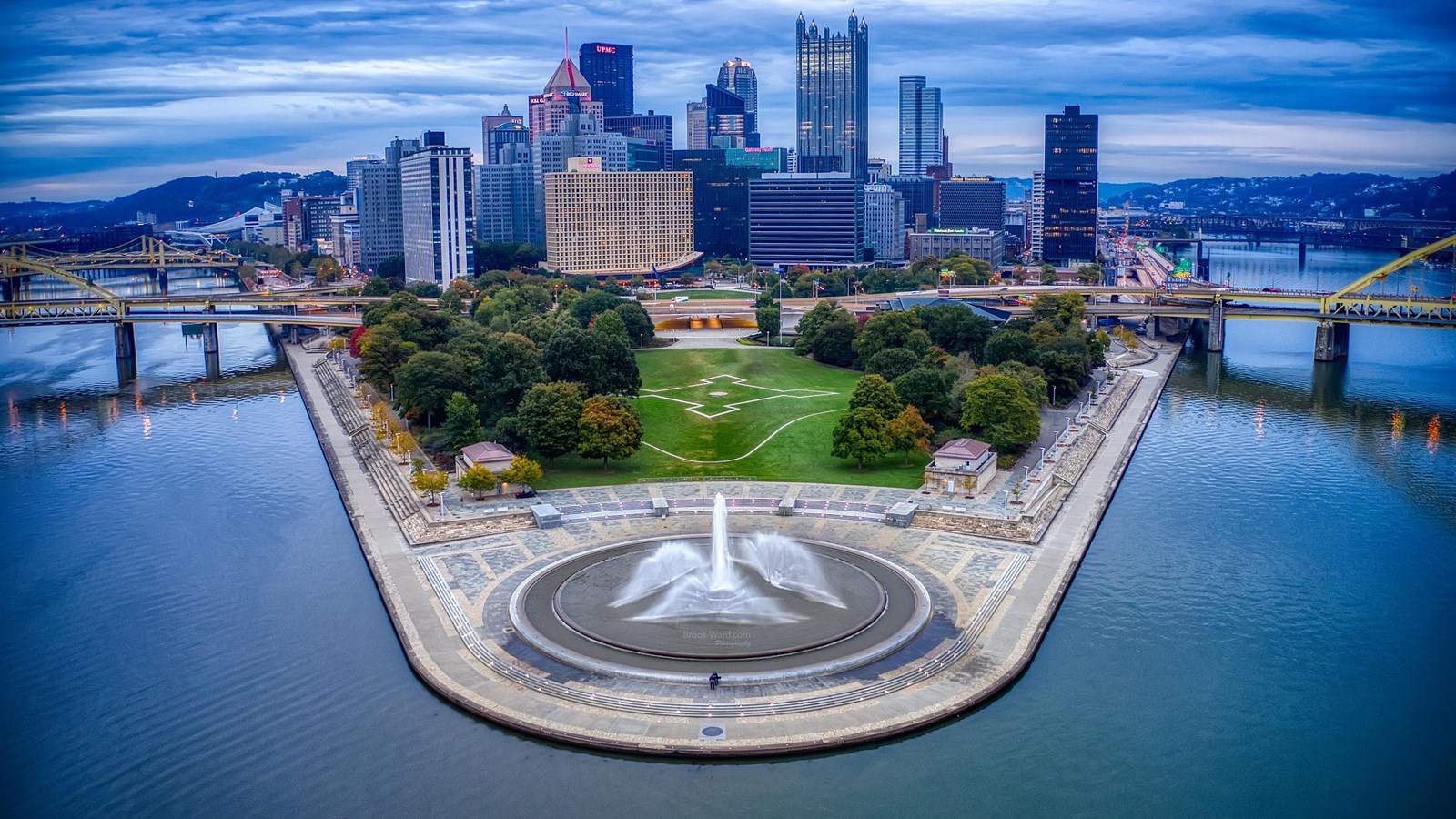Last updated: August 25, 2025
Place
Forks of the Ohio

Benches/Seating, Historical/Interpretive Information/Exhibits, Information, Information - Maps Available, Information Kiosk/Bulletin Board, Scenic View/Photo Spot
Lewis arrived in Pittsburgh on July 15, 1803, with intentions to depart on the expedition by the end of the month. However, the boat builder charged with constructing the keelboat continually pushed back the date of completion. Lewis received word from President Jefferson that the French had sold Louisiana to the United States as well as Clark’s acceptance of the offer to co-command the expedition. On August 31, 1803, after six weeks of delay, Lewis and members of what would become the Corps of Discovery departed from the boat yard approximately one mile up the Allegheny River. Lewis’s first entry in the expedition journal read, “Left Pittsburgh this day at 11 ock with a party of 11 hands 7 of which are soldiers, a pilot and three young men on trial.” The hands included George Shannon, who would later enlist in the Corps of Discovery. Also accompanying Lewis was his Newfoundland dog, Seaman.
The settlement which became Pittsburgh grew around Fort Pitt, built by the British at a strategic location at the confluence of the Allegheny and Monongahela Rivers which forms the Ohio River. As Pittsburgh industrialized in the nineteenth century, the site was overtaken with factories, railroads, and other infrastructure. In the mid twentieth century, the confluence was reclaimed as Point State Park, which includes the ca. 1764 Fort Pitt Blockhouse, granite blocks outlining the foundations of Fort Pitt, and the Fort Pitt Museum. The Heinz History Center has collections focused on the Lewis and Clark Expedition.
Forks of the Ohio is a High Potential Historic Site of the Lewis and Clark National Historic Trail.
Lewis and Clark NHT Visitor Centers and Museums
This map shows a range of features associated with the Lewis and Clark National Historic Trail, which commemorates the 1803-1806 Lewis and Clark Expedition. The trail spans a large portion of the North American continent, from the Ohio River in Pittsburgh, Pennsylvania, to the mouth of the Columbia River in Oregon. The trail is comprised of the historic route of the Lewis and Clark Expedition, an auto tour route, high potential historic sites (shown in black), visitor centers (shown in orange), and pivotal places (shown in green). These features can be selected on the map to reveal additional information. Also shown is a base map displaying state boundaries, cities, rivers, and highways. The map conveys how a significant area of the North American continent was traversed by the Lewis and Clark Expedition and indicates the many places where visitors can learn about their journey and experience the landscape through which they traveled.
